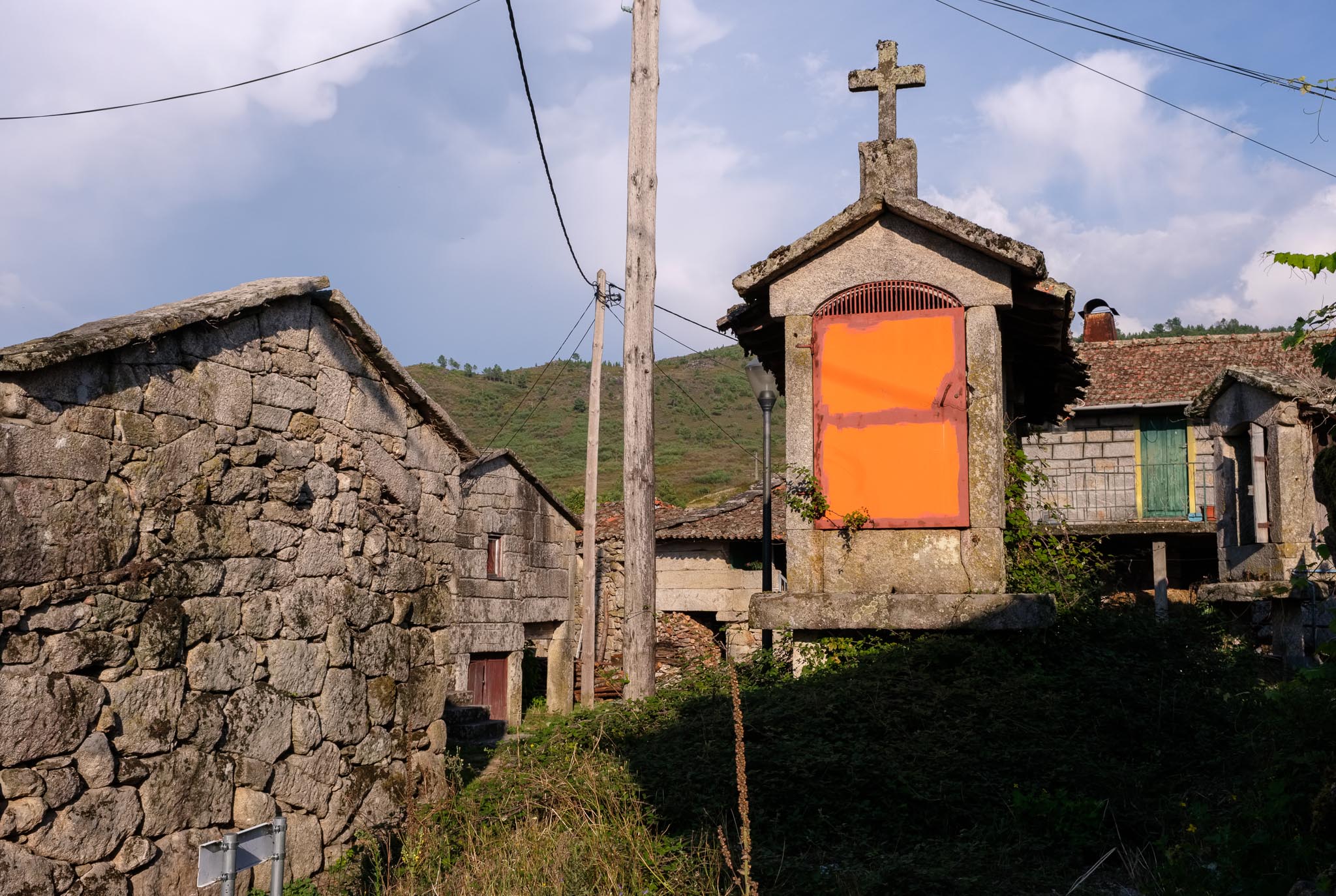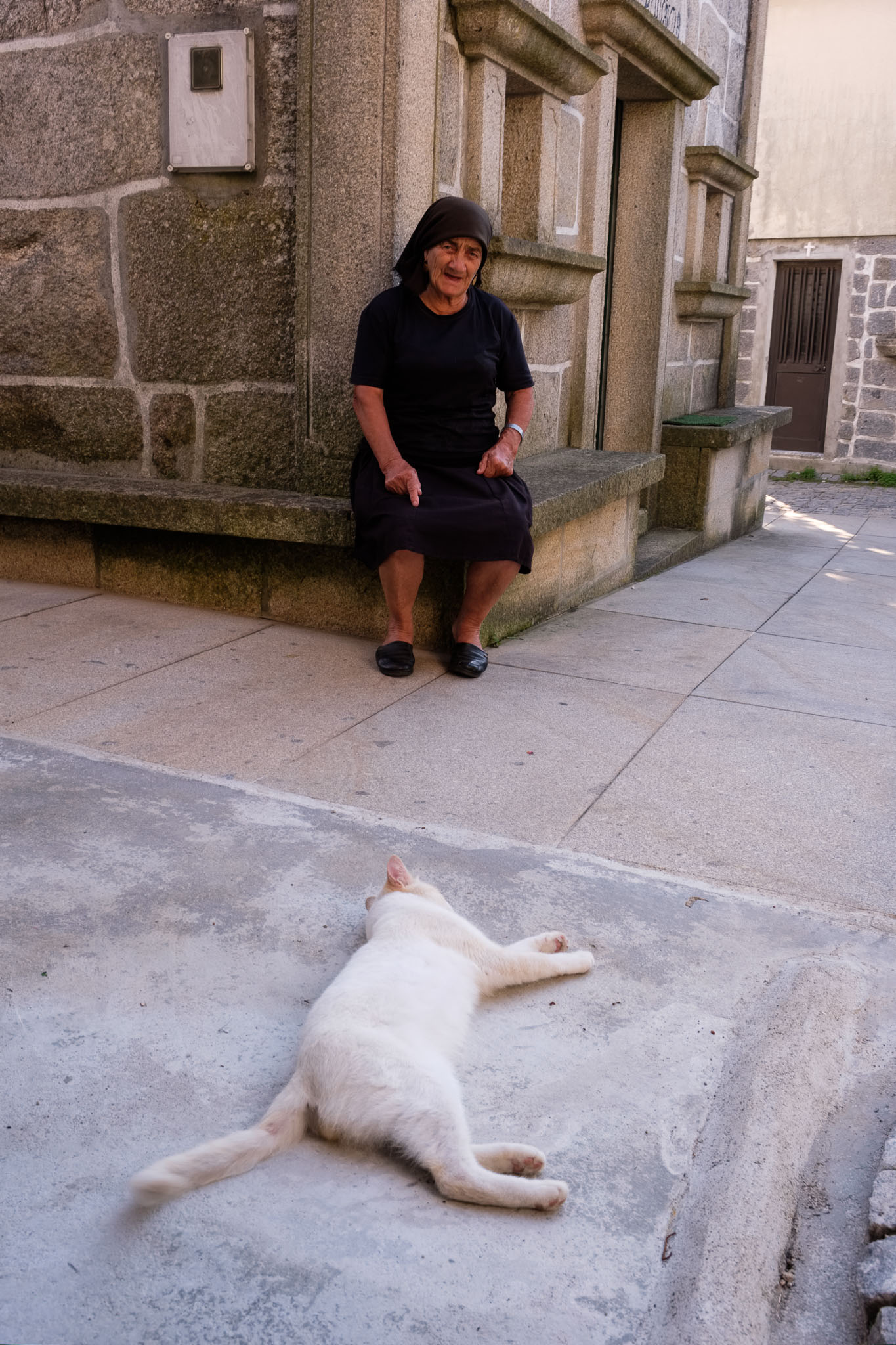In this second instalment, I will describe days 3 and 4 of out trip in this Park. As we move towards the west, we will visit some of the iconic areas around the Gerês valley, right at the heart of the Park. It will be a nice mix of waterfalls and great viewpoints, from which it is possible to admire this unique landscape.
Before leaving the region of Montalegre, you have to go to the Misarela bridge. Built over the Rabagão river, it was built in the Middle Ages, but there is a nearby Roman road, so no one knows for certain. It features a single 13m high arch, and shares the scenery with surrounding waterfalls. Legend has it that this bridge was built by the Devil itself, in exchange for the soul of a man who was running away from the authorities; facing the river and with no way to cross it, the man promised the Devil his soul in exchange for safe passage. The Devil built the bridge and took the man’s soul. During one of the Napoleonic invasions of Portugal in the XIX century, the French troops were held back on this bridge. Today, the place has a certain mystique, but only the quaint goats graze nearby.

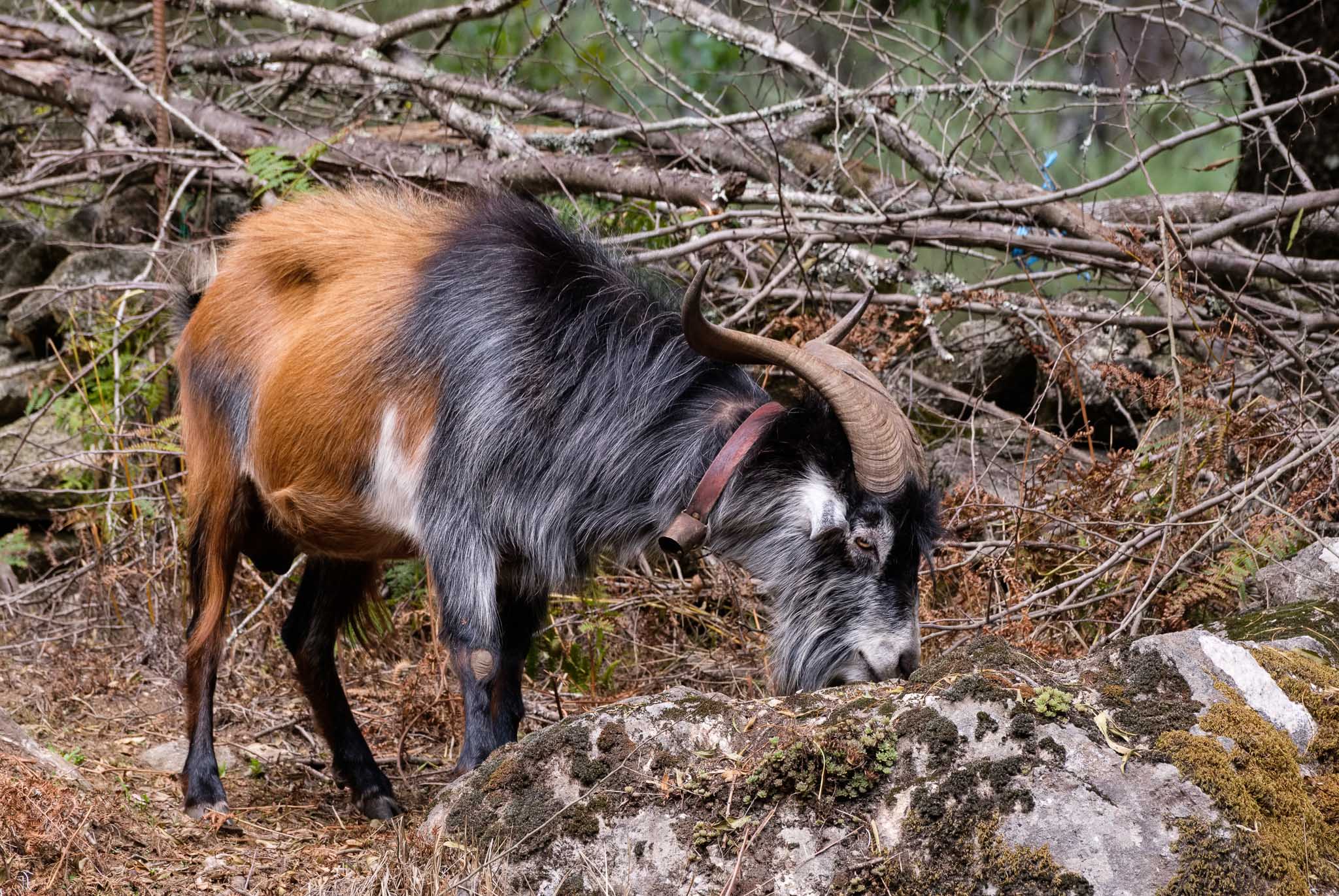
Leaving this legend-rich place behind us, we drove to the waterfall at Pincães, where the plan was to have a picnic lunch. Parking the car at the entrance of the village, it is a mere 1km to the waterfall through a nice forest trail. There are a few other people on the trail, after all it is the weekend and the day is hot. This waterfall fits the cliché nicely, with a tall column of water falling into a pool of crystalline water. A great occasion for a refreshing swim.
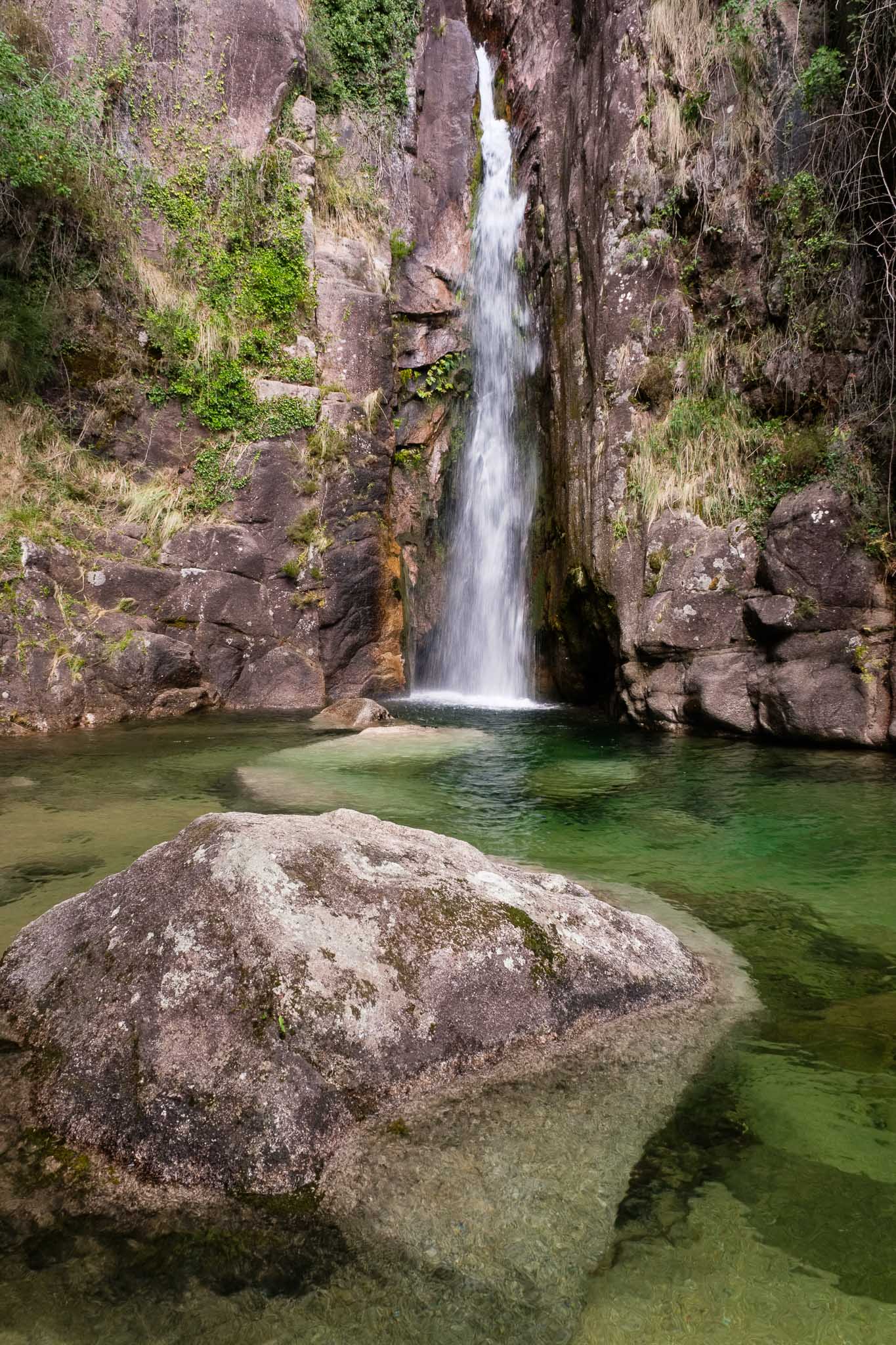
After relaxing in this wonderful place, it was time to continue our journey, this time to the waterfall at Arado. As you have surmised by now, there are numerous waterfalls in the PNPG, and they are all different. In some of them, it is possible to swim, but always exercise great care not to slip on the wet rocks. Even after a year of severe drought, the waterfalls that we visited had plenty of water. Back on the road, before reaching Arado, it is worth to stop in the small town of Ermida, halfway up the mountain. Here, there is a nice viewpoint over the landscape.

To reach the Arado waterfall, there is a beautiful forest trail, in the shade of tall trees. This waterfall is located at 900m altitude, and the water falls in a couple of steps from up high. It is one of the most beautiful places in the heart of Gerês, and it is popular for canyoning.
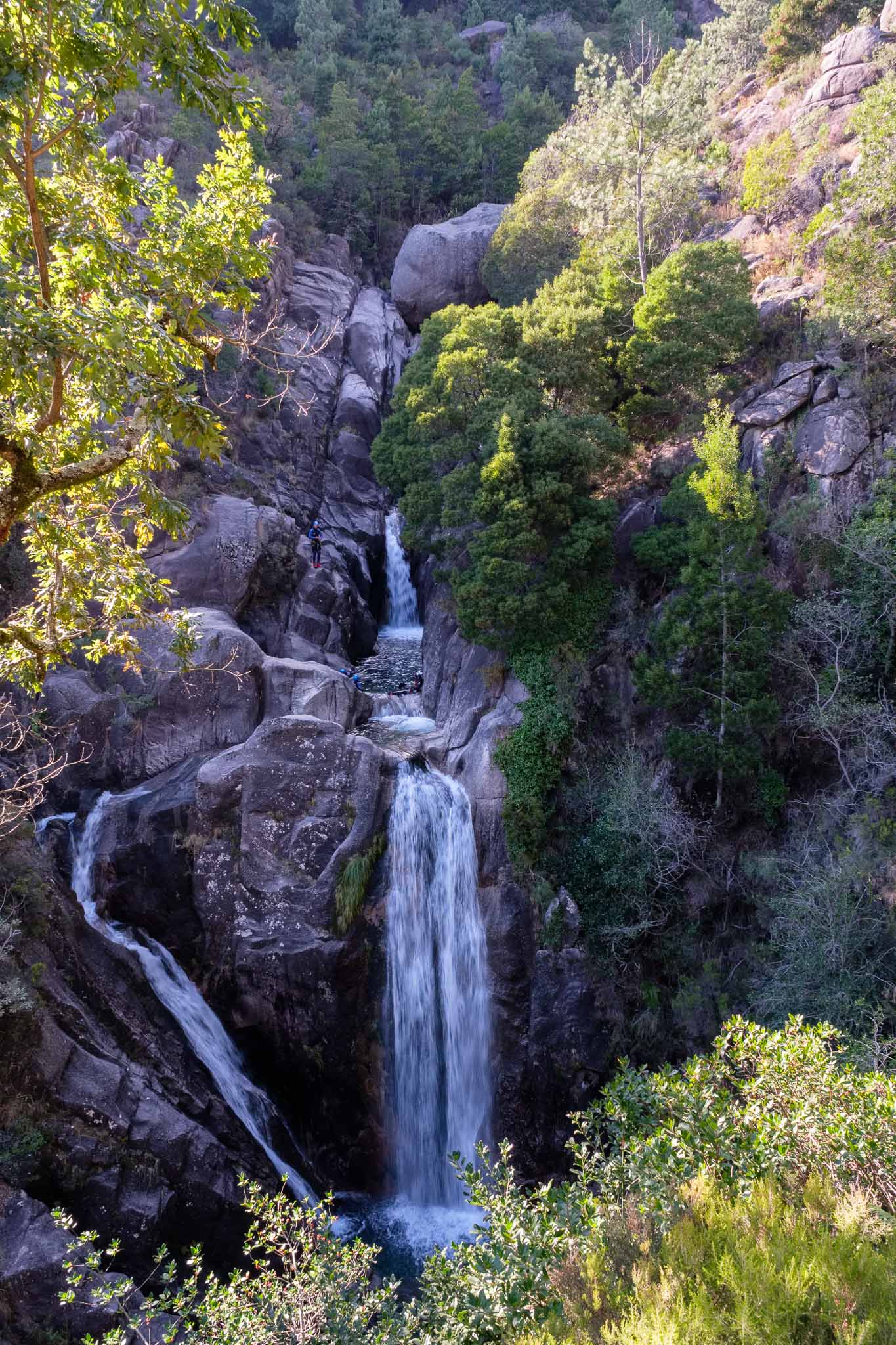
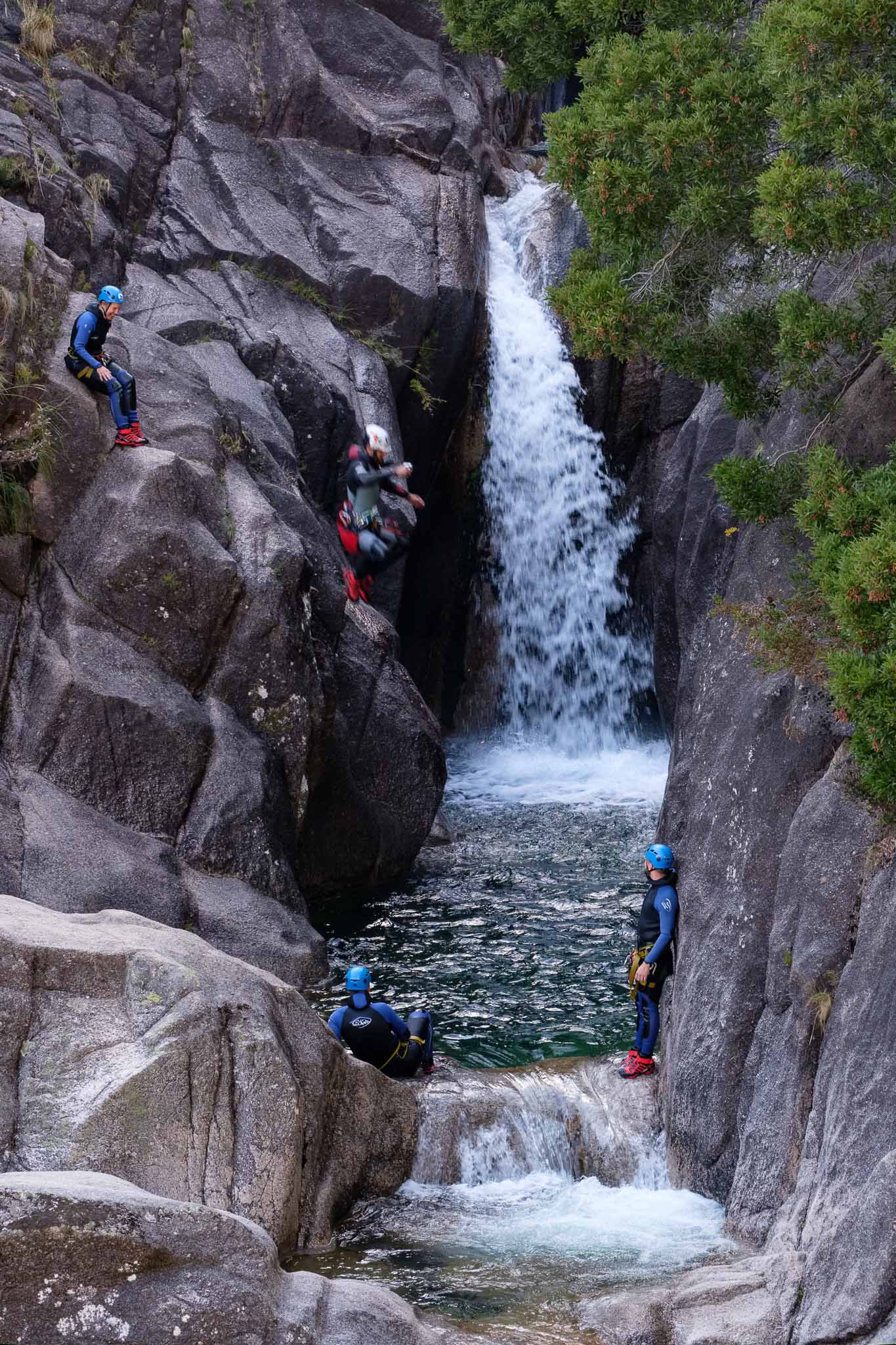
Don’t leave the area without climbing up to the Roças viewpoint, where you can admire the Arado river valley cutting through the mountains.
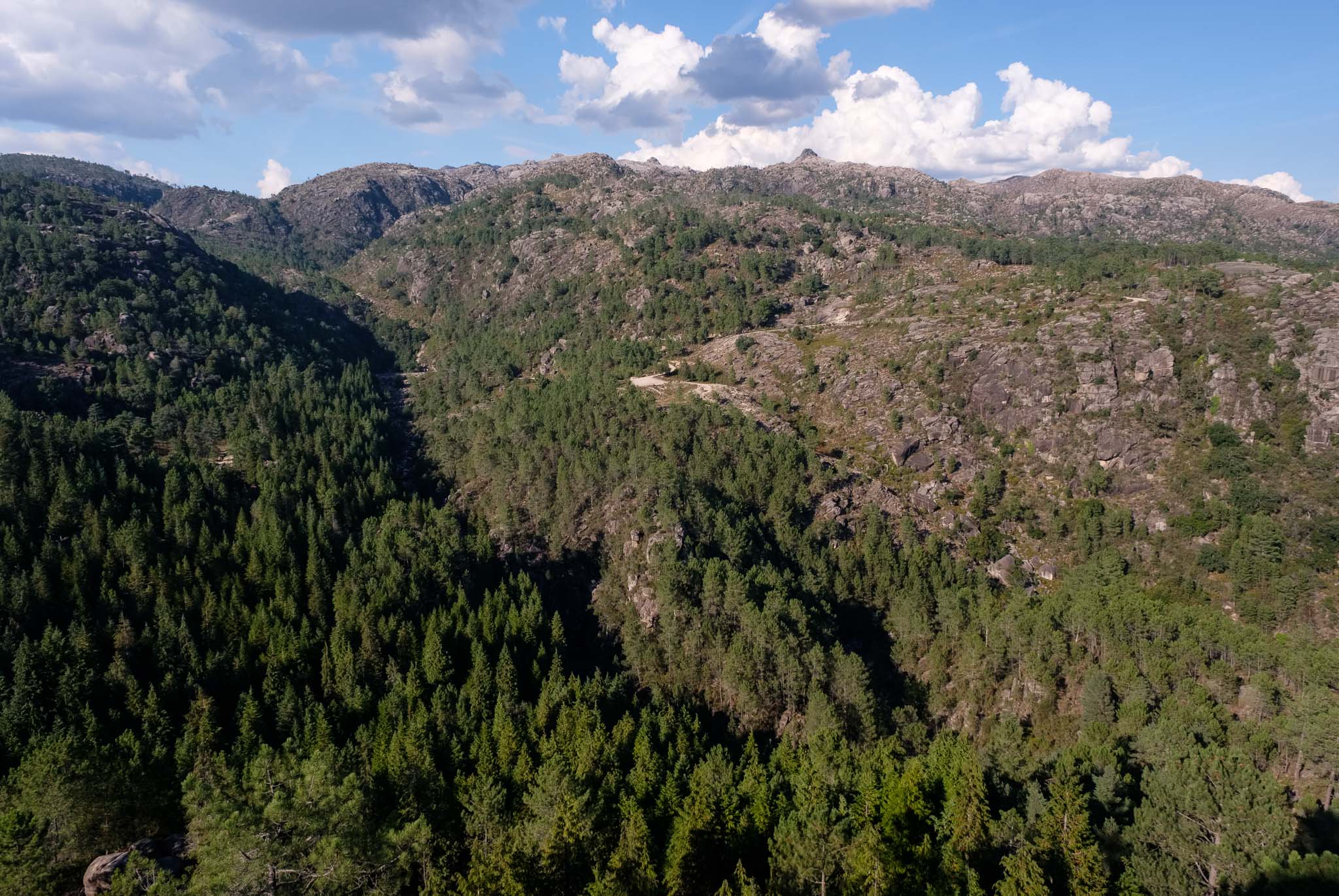
Speaking of viewpoints, there is no better way to end the day than admiring the scenery from the Pedra Bela viewpoint. From here, you have a complete view of the Gerês valley to the north, and the Caniçada lake to the south. Mountains, trees, and water. Pay attention, and you will also see the birds of prey flying in the distance.
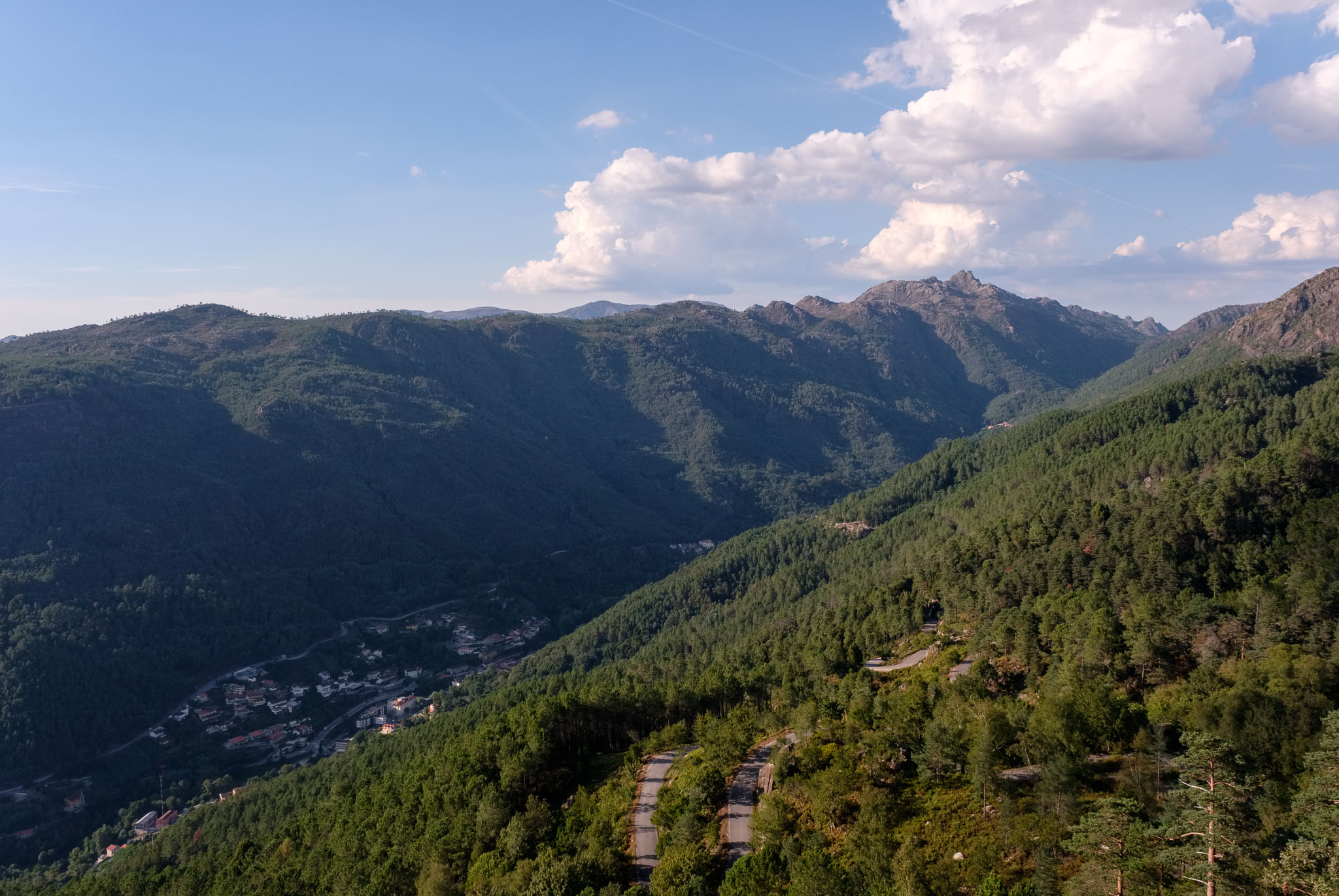
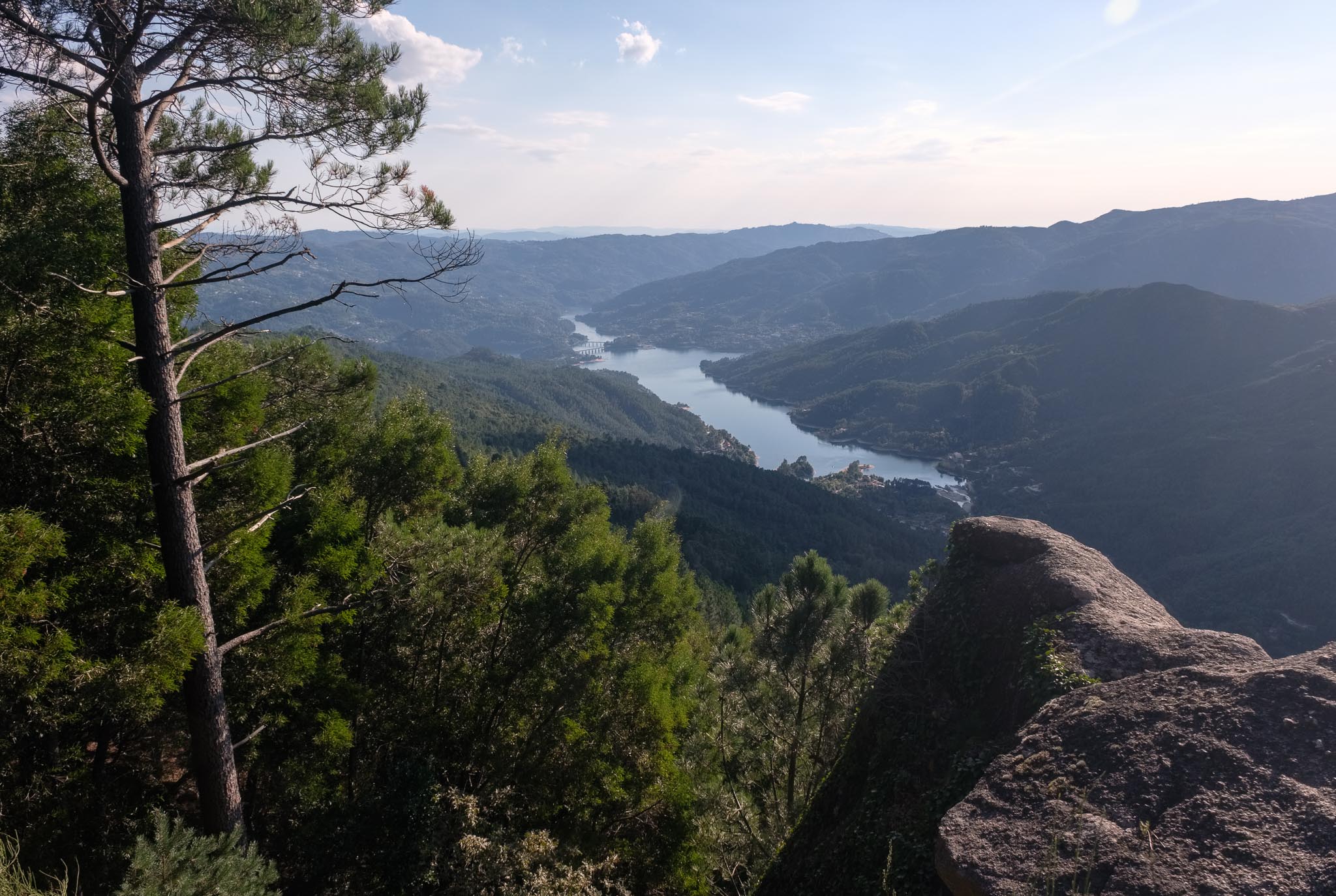
After a really full day with waterfalls, forest trails, and great viewpoints, it was time to return to Gerês for a well deserved night rest. For day 4, the plan included a visit to one of the iconic places of the PNPG, the Mata (Woods) da Albergaria, located north near the border with Spain. There is a trail of about 4km that takes you through the heart of these famous woods, where you can admire, amongst other things, very old oak trees (Quercus robur and Quercus pyrenaica), plus parts of a Roman road and its associated milestones (or marcos miliários) and bridges. These woods are unique in Portugal, and as such the access can be prohibited if the risk of forest fires is considered high. Walking along this ancient forest is truly a magical experience. And of course there are a few waterfalls too!
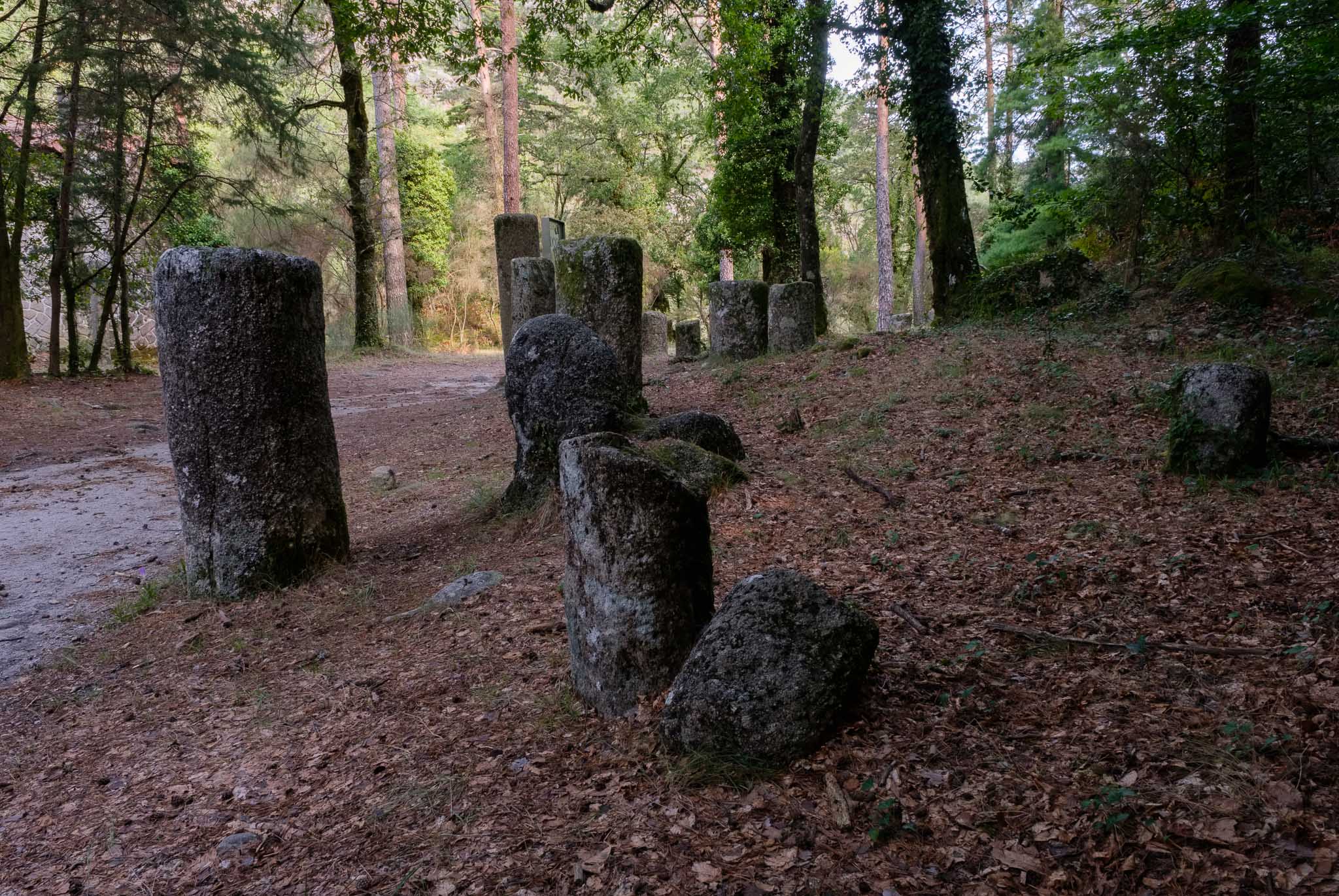
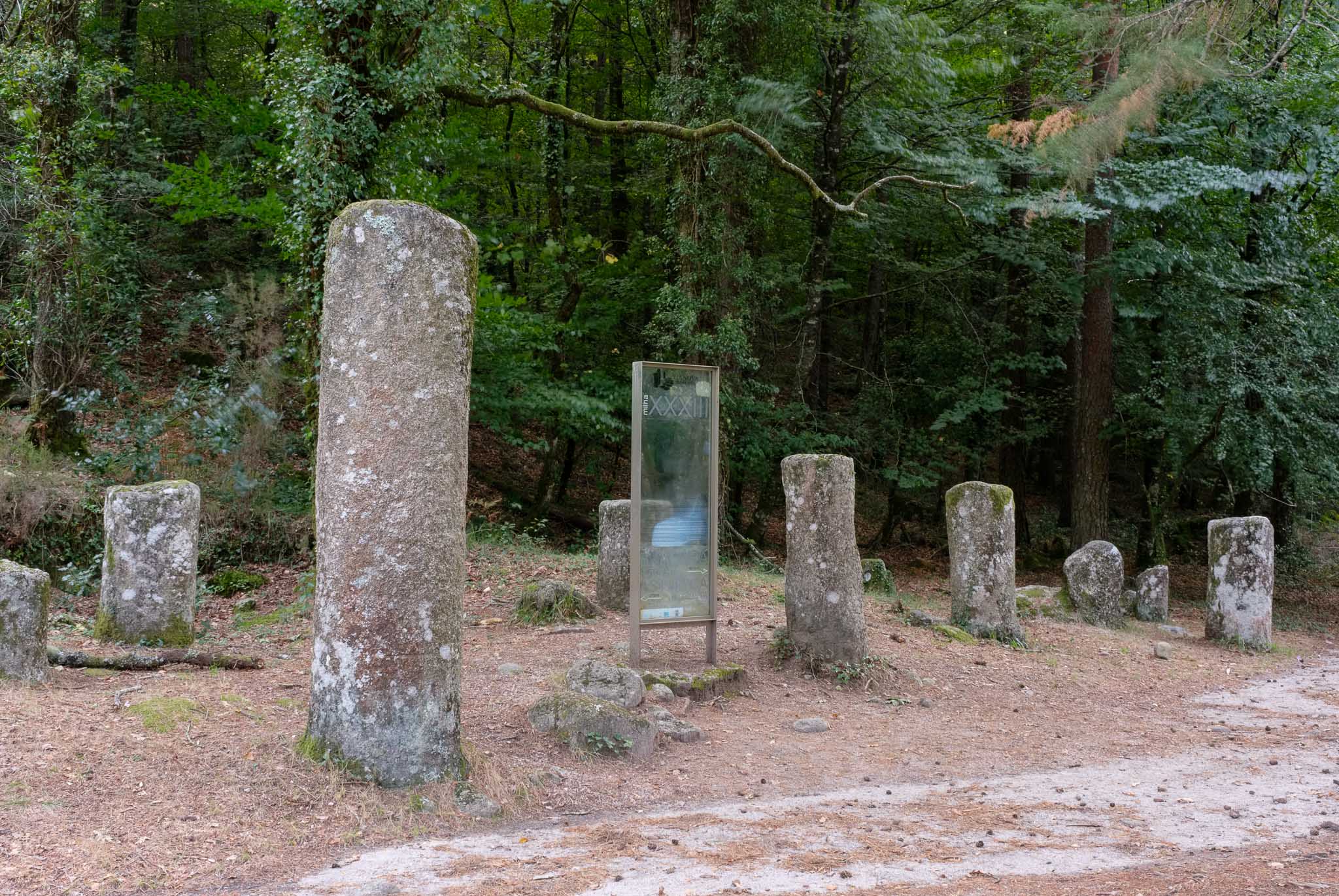
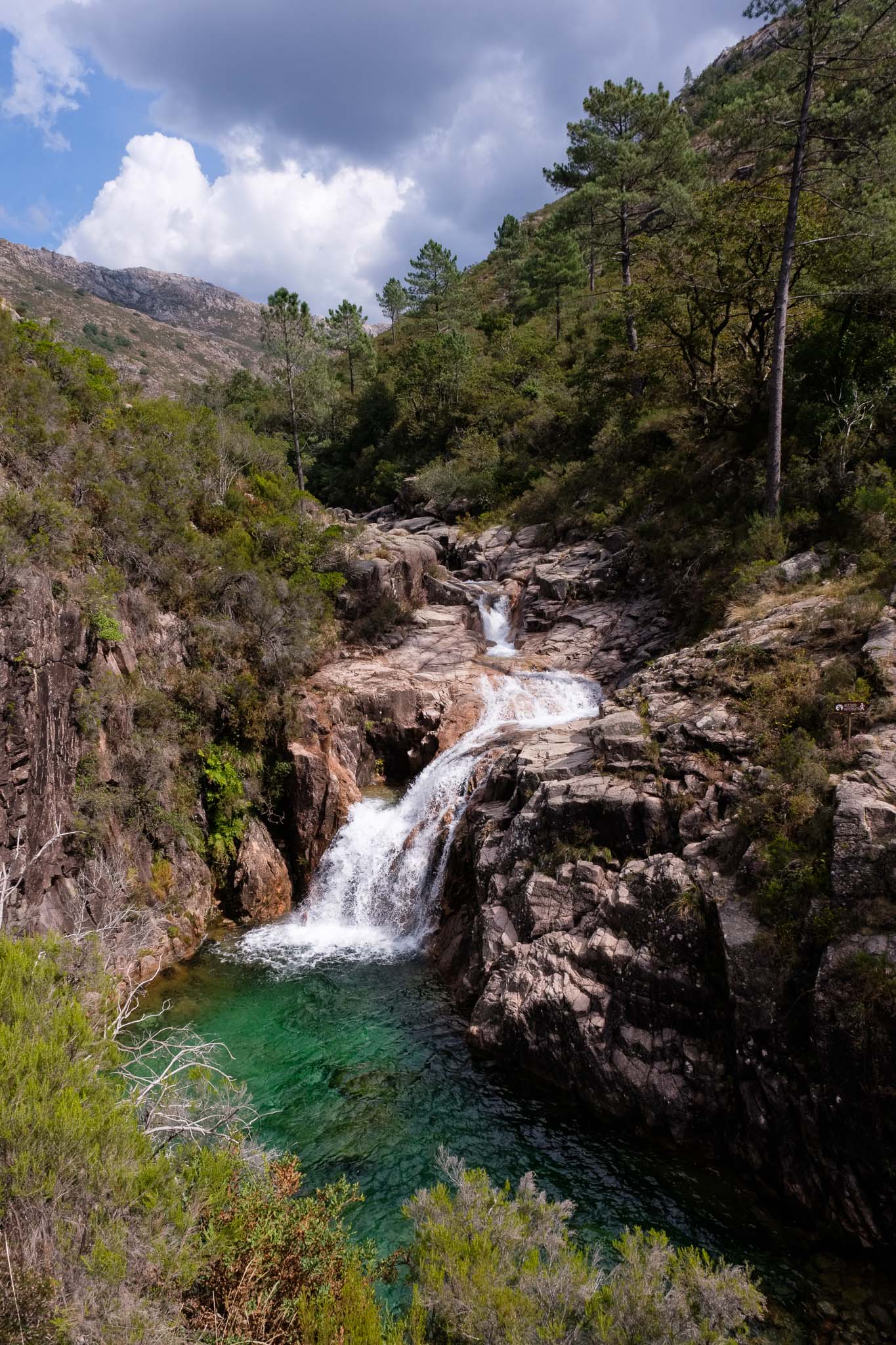

After visiting Albergaria, why not drive into Spain and enjoy the hot thermal baths in the nearby village of Lobios? You just have to continue to follow the road along the Gerês valley (Xurês in Spanish), where the river Caldo runs its course. And there are nice shaded areas for a picnic.
As we were spending the night in the village of Sobredo, in the western part of the Park, there was some more driving to do. The road crosses some of the most wild and deserted areas of the region, in the Germil plateau. At high altitude, vegetation is short and constantly buffeted by strong winds; granite is everywhere, and seems to cascade down the mountainsides. Here and there, groups of houses form small rural settlements.
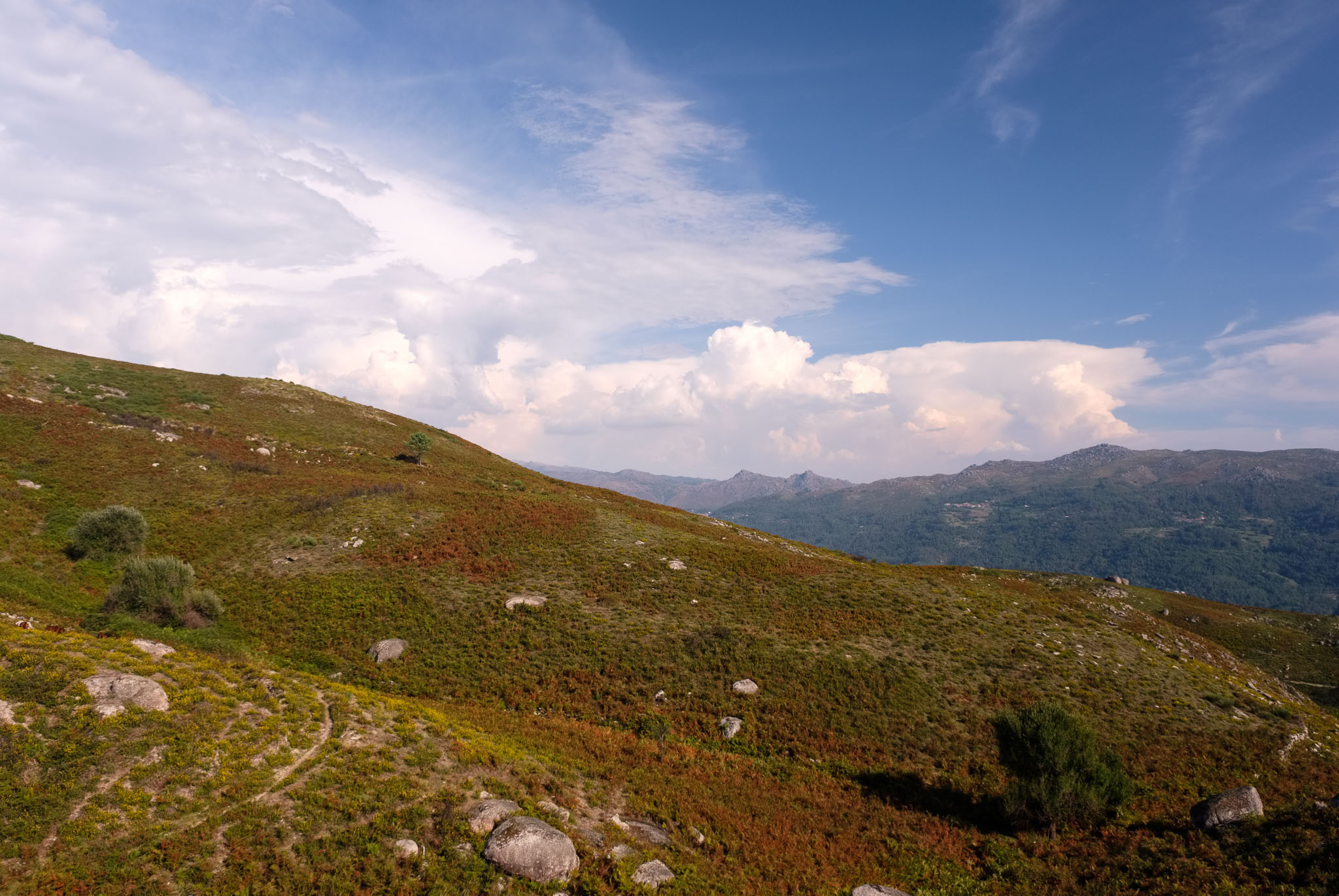
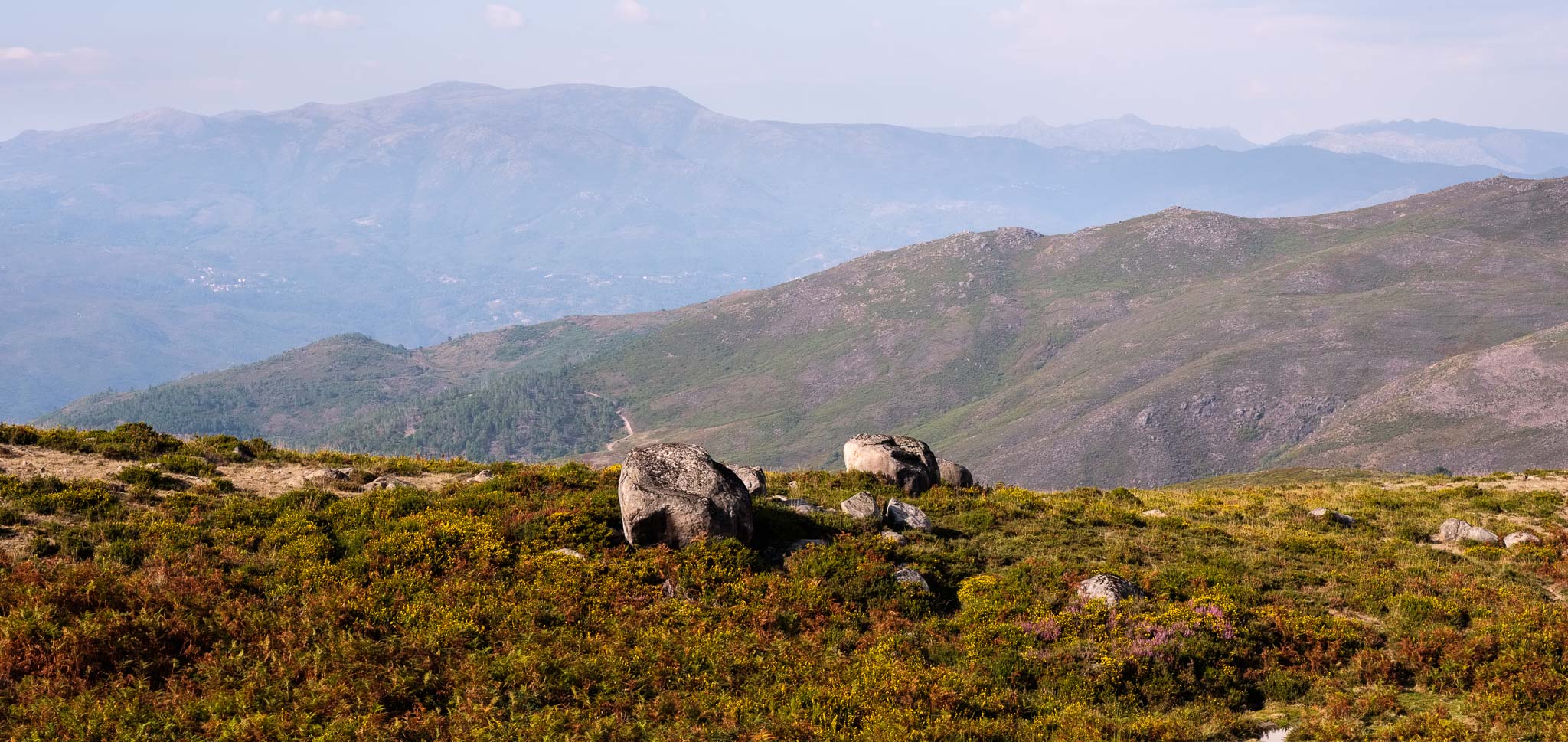
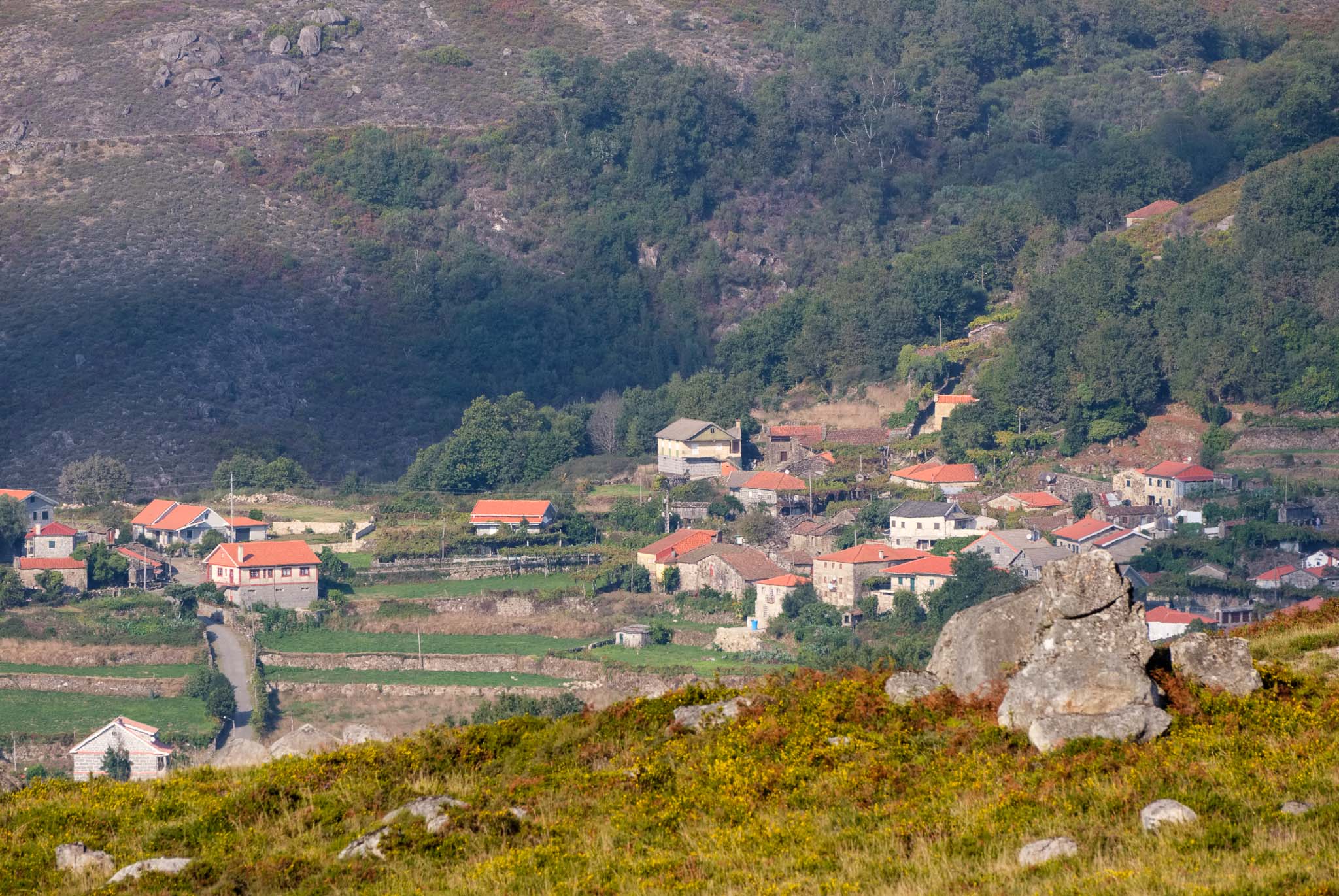
It is difficult to resist the temptation of stopping to admire and photograph the landscape. But we keep going until we reach Sobredo, where we were spending the night. This is a typical rural village, quite small, with houses made of granite. In many of these places, houses have been recovered for the tourism industry, supplementing the income of the owners. The streets are narrow, and the ubiquitous espigueiros are present. I sit down in some stairs and strike a conversation with Dona Ermelinda, an old lady that has many stories to tell. She talks of difficulties of making a living from agriculture, where only the month of August sees some animation brought to these parts by emigrants returning to spend their vacation.
